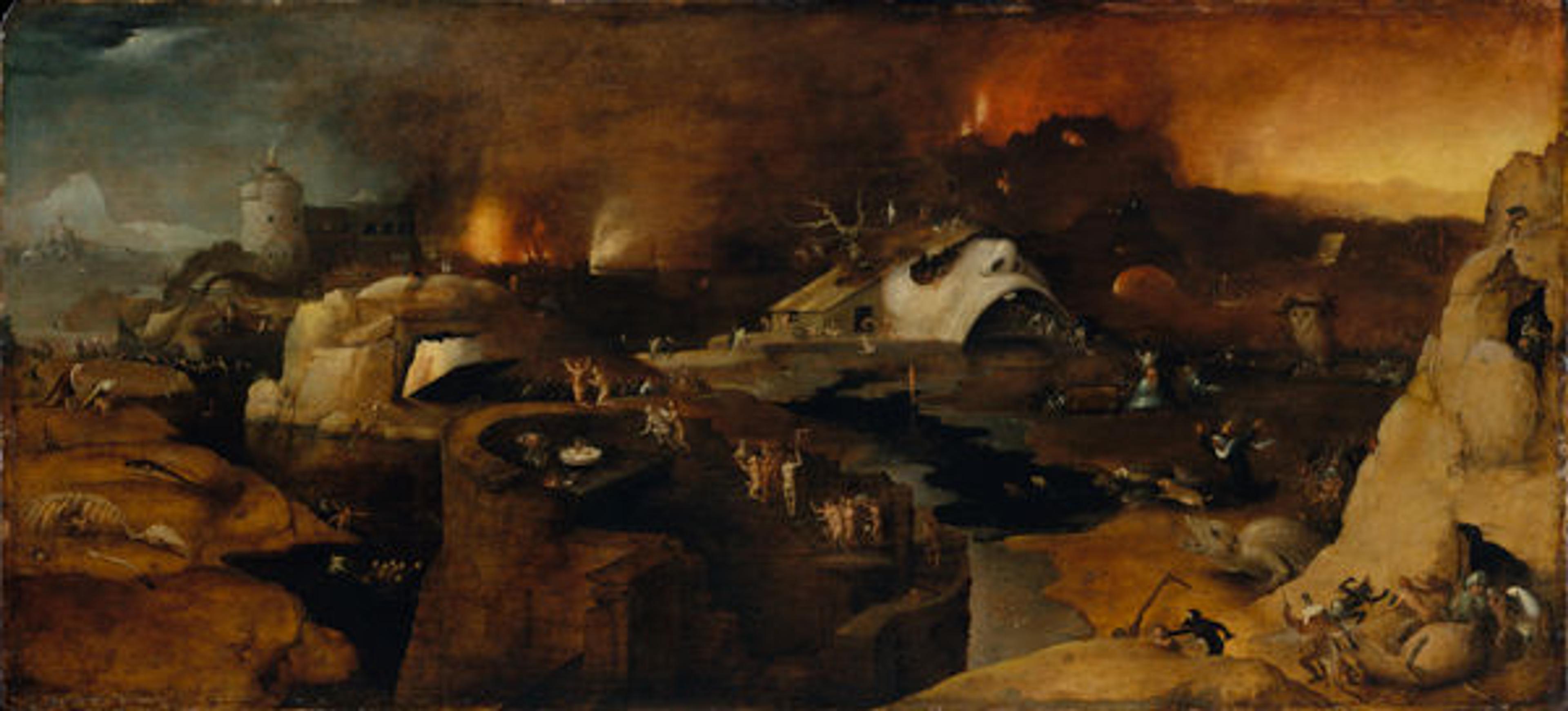Style of Hieronymus Bosch (Netherlandish, ca. 1550–60). Christ's Descent into Hell. Oil on wood. The Metropolitan Museum of Art, New York, Harris Brisbane Dick Fund, 1926 (26.244)
«When we recently walked through gallery 642 in European Paintings, this painting in particular caught our eye. We found it so eye-catching because of its distinctive, dark color palette that makes it stand out from the rest of the gallery, and also because of its surreal and macabre subject matter.»
Christ's Descent into Hell represents exactly that: hell. It is riddled with biblical references rendered by the artist in excruciatingly small details. For example, if you look closely, you can see a plethora of extremely creative and extravagantly hellish debauchery: an owl with a human face reading a book, a half-submerged structure in the shape of a gaping human mouth, and a veritable cornucopia of nightmarish creatures. This work attempts to depict the formerly unimaginable hardships of hell—incredible brutality, hard labor, an ever-present aura of death and destruction, and ritualistic wrack and ruin.
Yet if you look closely at the left-hand side of the painting and focus on the background, you'll see a seemingly peaceful and milky-looking horizon that contrasts with the fiery depths of the right side. This may represent the artist's desire to express the duality of the human experience, that there may still be a possibility of salvation for the piteous individuals depicted. Christ's Descent into Hell serves as both a cautionary tale and a message of hope. If you are a sinner, this is what you are condemned to experience; however, there is always the possibility of your redemption.
